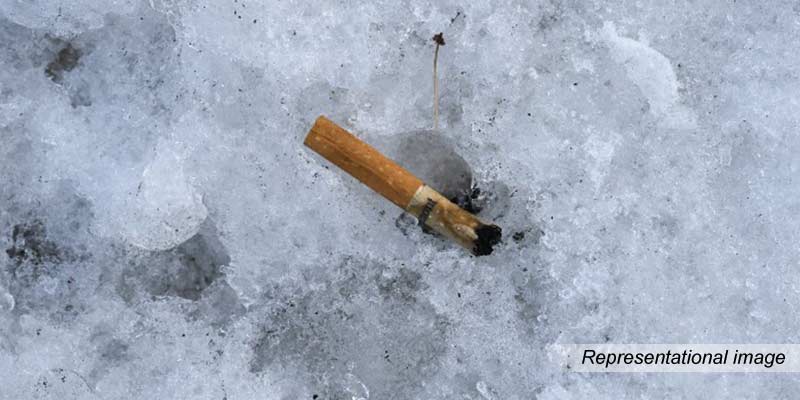- World
- Aug 14
Scientists identify plastic-eating fungi in Germany
• Scientists in Germany have identified plastic-eating fungi that could offer a glimmer of hope in tackling the problem of millions of tonnes of waste polluting the world’s oceans every year.
• An analysis at Lake Stechlin in north-eastern Germany into how microfungi thrive on some plastics with no other carbon source to feed on has clearly demonstrated that some of them are capable of degrading synthetic polymers.
• Scientists believe that microbial plastic destroyers could be used in sewage treatment plants or other facilities with controlled conditions.
• Of 18 selected fungal strains, four proved to be particularly “hungry”, which means they could efficiently utilise plastics, especially polyurethane which is used to make construction foam.
• Polyethylene, used in plastic bags and packaging, was much slower to degrade, and microplastics from tyre abrasion were the most difficult, largely because of additives like heavy metals.
• Scientists add that their work is likely to be only a small part of solving plastic pollution, and say there is still a need to reduce food packaging and other debris from entering the environment where it can take decades to degrade.
Plastic pollution
• Plastic pollution is a global problem.
• Unlike other materials, plastic does not biodegrade. This pollution chokes marine wildlife, damages soil and poisons groundwater, and can cause serious health impacts.
• More than 400 million tonnes of plastic is produced every year worldwide, half of which is designed to be used only once. Of that, less than 10 per cent is recycled.
• An estimated 19-23 million tonnes end up in lakes, rivers and seas annually. That is approximately the weight of 2,200 Eiffel Towers all together.
• It is estimated that each person on the planet consumes more than 50,000 plastic particles per year, and many more if inhalation is considered.
• Microplastics are tiny pieces of plastic material typically smaller than five millimetres.
• From the deepest points of the ocean to the food and water we consume, microplastics are a growing threat to human and planetary health.
• These tiny plastic particles are present in everyday items, including cigarettes, clothing and cosmetics.
• Microplastics enter the ocean from marine plastic litter breaking down, run-off from plumbing, leakage from production facilities and other sources.
• When ingested by marine life such as birds, fish, mammals and plants, microplastics have both toxic and mechanical effects, leading to issues including reduced food intake, suffocation, behavioral changes and genetic alteration.
• In addition to entering the food chain through seafood, people can inhale microplastics from the air, ingest them from water and absorb them through the skin.
• Microplastics have been found in various human organs, and even in the placenta of newborn babies.
Major sources of microplastics
• Primary microplastics are items that have intentionally been manufactured in a small size, such as microfibers from clothing, microbeads and plastic pellets
• Most of the microplastic waste in the environment is made up of fragments from large pieces of litter such as plastic bags, bottles or packaging. These are known as secondary microplastics.
• Microplastics known as cellulose acetate fibres comprise the majority of cigarette filters. With six trillion cigarettes consumed by one billion smokers annually, these fibres reach every corner of the world. Cigarette butts are the most common plastic litter on beaches, making marine ecosystems highly susceptible to microplastic leakages. When they break down, cigarettes release microplastics, heavy metals and many other chemicals that impact ecosystems’ health and services.
• Plastics – including polyester, acrylic and nylon – comprise approximately 60 per cent of all clothing material. Due to abrasion, clothing and textiles with these materials shed microplastics known as microfibres when washed or worn.
• Cosmetics and personal care products are other staples of grooming routines that can be loaded with microplastics. These products often contain primary microplastics, which are intentionally manufactured and added, often to provide texture — from hand sanitizer and soap to toothpaste and deodorant.
• Plastic particles from these products can be absorbed into the skin or, in the case of products like lipstick or lip balm, directly ingested. Microplastics that remain on the skin are eventually washed down the drain and could make their way to the ocean.
• Once released into the environment, microplastics are practically impossible to remove and will remain there for hundreds, if not thousands, of years.
Manorama Yearbook app is now available on Google Play Store and iOS App Store


